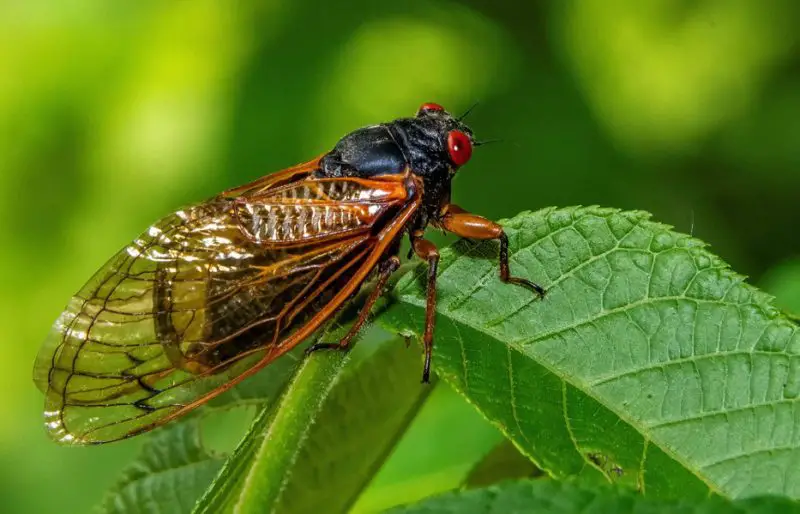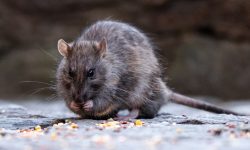Cicadas are some of the most intriguing insects found in forests, gardens, and wetlands. Known for their loud summer calls and mysterious underground life cycles, these insects have equally fascinating feeding habits. Although they spend years hidden beneath the soil, the way they nourish themselves plays a crucial role in their growth, development, and survival.
While adult cicadas live only a few weeks, their nymph stage can last anywhere from two to seventeen years depending on the species. During this long period underground, their diet remains surprisingly simple yet essential for sustaining them. Once they emerge, their eating habits shift slightly to support reproduction and energy-demanding activities like climbing, singing, and flying.
Understanding what cicadas eat helps explain their impact on trees, gardens, and ecosystems. Their feeding behavior shapes plant health, soil conditions, and interactions with other wildlife. Below, you’ll find a complete, detailed guide covering everything cicadas eat—from their time underground as nymphs to their brief but dramatic life above the surface.
Understanding the Cicada Diet

The basic needs of nymphs and adults
Cicadas are herbivorous insects that feed solely on plant fluids. Nymphs use specialized mouthparts to pierce plant roots underground, drawing nutrient-rich sap that supports their slow development. Adults, on the other hand, feed primarily on tree sap and plant juices, consuming just enough energy to mate and complete their short life cycle.
How cicadas obtain nutrients
Unlike insects that chew leaves, cicadas rely on a long, straw-like feeding tube called a proboscis. This structure allows them to tap into xylem or phloem, depending on the plant species and life stage. Because xylem sap is low in nutrients, cicadas must consume it constantly, which explains why they spend so much time attached to plants.
Why their diet matters
Cicadas rarely kill plants, but heavy feeding can cause temporary wilting or discoloration, especially in young trees. Their diet also influences soil aeration as nymphs burrow. By knowing what cicadas eat, gardeners and homeowners can better manage plant health during cicada emergence years.
20 Foods Cicadas Love the Most
1. Tree Root Sap
Tree root sap is the main food source for cicada nymphs during their long underground life. They anchor themselves to fine roots of trees like oak, maple, and elm, feeding slowly but consistently for years. This stable nutrient supply helps them grow gradually without expending much energy.
The sap provides water, trace sugars, and essential minerals that nymphs need to survive. Because the sap is low in nutrients, nymphs must feed almost constantly, which is why they remain attached to roots for extended periods. This slow, steady feeding is perfectly suited to their long development.
By relying on root sap, cicadas maintain enough hydration and energy to eventually crawl out of the soil. When the emergence year arrives, this stored strength allows them to molt into adults and begin their short aboveground life.
2. Shrub Root Sap
Shrubs such as dogwood, rose, and viburnum provide easily accessible root sap for younger cicadas. Their shallow roots allow small nymphs to tap into them without burrowing deeply. This makes shrub root sap especially valuable in early development.
Compared to tree sap, shrub root sap often contains slightly more sugars, giving nymphs an important energy boost. This becomes particularly useful during drought or nutrient-poor seasons when survival is harder.
Shrubs act as backup food sources in places where large trees are limited. Their widespread availability allows cicadas to thrive in forest edges, gardens, and suburban landscapes.
3. Grass Root Fluids
Grass roots offer a simple but reliable source of moisture for very young cicada nymphs. These roots grow densely in lawns and open fields, making them easy to find and attach to. Although low in nutrition, grass root fluids provide essential hydration.
Because grasses grow quickly and produce countless fine roots, they offer many feeding sites underground. This makes them ideal for nymphs in early developmental stages before they move on to stronger root systems.
Their feeding rarely harms lawns or affects growth. Cicadas coexist peacefully beneath grassy areas, helping aerate soil as they tunnel through it.
4. Wildflower Root Sap
Wildflowers such as asters, goldenrod, and daisies produce shallow root networks that cicada nymphs can easily access. These roots supply diverse plant compounds that help enrich the nymph’s nutrition.
Wildflower sap varies depending on soil type and season, giving nymphs a broader nutrient profile. This diversity supports healthier development and may improve nymph survival rates.
As cicada nymphs tunnel around wildflowers, their movement naturally aerates the soil. This can benefit wildflower growth, creating a mutually supportive underground ecosystem.
5. Tree Trunk Sap
Adult cicadas feed on tree trunk sap by inserting their proboscis into thin or damaged bark. The sap provides hydration and small amounts of sugar, which adults need for flying and calling.
Trees like maple, birch, and willow produce abundant sap that flows more easily during summer. Cicadas often gather on the sunlit sides of trees, where sap pressure is highest.
Although their feeding creates tiny punctures, it rarely harms the tree. Most trees tolerate cicada feeding without any long-term effects.
6. Branch Sap
Small branches are favorite feeding points for adult cicadas because the bark is thinner and easier to pierce. Cicadas often cluster on upper branches where sap flow is active and accessible.
Branch sap offers slightly more sugars than trunk sap, providing better energy for adult cicadas during mating season. These nutrients help sustain their demanding activities.
Even during heavy emergence years, cicada feeding on branches causes only cosmetic marks. Trees quickly heal these tiny punctures once cicada activity declines.
7. Leaf Stems
Leaf stems channel fresh sap from the tree into each leaf, making them valuable feeding spots for cicadas. Adults use their feeding tube to access this fluid with minimal effort.
Leaf stem sap is nutrient-rich because it has not yet been distributed to the leaf tissue. This gives cicadas a more concentrated source of hydration and energy.
Although their feeding can create tiny spots on the stems, it does not impact overall plant health. Trees continue growing normally even during heavy cicada presence.
8. Tender Shoots
Tender shoots from new plant growth are prime feeding spots for adult cicadas. These soft, flexible tissues require far less pressure to pierce, making them perfect for newly emerged insects whose feeding muscles are still developing.
Because shoots are loaded with moisture and natural sugars, they help adult cicadas stay energized during hot summer days. The sap moves rapidly through these young tissues, giving cicadas an easy and highly nutritious drink.
Cicadas often gather around clusters of new shoots in late spring and early summer. While they may leave tiny marks, the plants typically continue growing without lasting harm.
9. Fruit Tree Sap
Fruit trees like apple, peach, cherry, and pear release highly nutritious sap that adult cicadas consume enthusiastically. These trees circulate sugar-rich fluids that provide quick energy needed for flight and calling.
Cicadas tap into fruit trees by inserting their feeding tube into thin bark or small twigs. The higher sugar levels give them an extra boost during busy mating seasons when constant activity demands more fuel.
Although their feeding may cause minor blemishes, cicadas rarely cause serious damage to fruit trees. Most orchards continue producing healthy fruit even during mass emergence years.
10. Vine Sap
Vines such as grapevine, honeysuckle, and ivy produce fast-flowing sap in their stems, making them ideal food for adult cicadas. Their soft structure allows easy penetration and consistent fluid flow.
Cicadas often rest on climbing vines because the plants provide both shade and accessible hydration. The stems stay cool and moist, helping cicadas conserve energy as they feed.
Vine thickets serve as temporary shelter between feeding sessions, creating small gathering spots during peak cicada season.
11. Root Nodules
Root nodules from nitrogen-fixing plants like clover, peas, and alfalfa offer nutrient-enhanced sap for cicada nymphs. These nodules contain compounds enriched by symbiotic bacteria, giving cicadas a more potent food source.
Nymphs feeding on these nodules get higher levels of nitrogen-based nutrients, helping them grow faster in poor soil conditions. This becomes particularly valuable during drought or nutrient shortages.
These nodules serve as survival hotspots, allowing cicadas to maintain steady development even when other roots offer limited nutrition.
12. Ornamental Plant Sap
Ornamental plants such as hydrangea, lilac, rose bushes, and boxwood provide occasional feeding sources for adult cicadas. They turn to these plants mainly when cicada populations are high and traditional hosts become crowded.
The sap from these shrubs offers moisture and trace sugars that temporarily support adult cicada activity. Although not their preferred food, ornamentals act as backup hydration sources.
Most ornamental plants tolerate cicada feeding well. Homeowners may notice small punctures, but the plants typically remain healthy throughout the season.
13. Saplings
Saplings with thin bark and fast-growing tissues are particularly attractive to cicadas. Their young stems are rich in moving sap, making them a convenient and nutrient-dense feeding option.
Adult cicadas often gather around newly planted trees in gardens, parks, and forests. The soft bark allows effortless feeding, which is especially useful for weaker adults.
During major emergences, saplings may host many cicadas at once, but the resulting marks are usually superficial and heal naturally as the tree grows.
14. Moist Soil Fluids
Very young cicada nymphs sometimes take in moisture directly from soil before attaching to a stable root. These fluids contain small amounts of dissolved minerals and organic compounds.
This temporary feeding method helps nymphs survive while transitioning between root systems or during dry periods underground. They rely on soil moisture until they locate a suitable plant root.
While low in nutrients, these fluids play a key role in early survival, allowing vulnerable nymphs to maintain hydration until they connect to a dependable food source.
15. Herbaceous Plant Sap
Soft-stemmed herbaceous plants like milkweed, thistle, goldenrod, and daisies provide easy-access sap for adult cicadas. These stems are simple to pierce and offer moderate sugar content.
Cicadas often rest on these plants in open areas such as meadows or roadsides, feeding casually while remaining hidden from predators. The sap also helps maintain hydration in direct sunlight.
Because these plants grow rapidly, cicada feeding rarely causes harm. Many of them recover quickly and continue blooming throughout the season.
16. Flower Stems
Flower stems hold fresh sap that adult cicadas drink while resting or mating. They usually tap into the thicker lower part of the stem where fluid movement is strongest.
Cicadas may pause on flower stalks during warm afternoons, using the abundant moisture to stay hydrated. This simple feeding behavior supports long hours of activity.
Although heavy feeding can cause slight wilting, flowers typically bounce back once cicada numbers decrease.
17. Human-Planted Shrubs
Landscaped shrubs such as privet, boxwood, and holly often become feeding sites during mass cicada emergences. Their thin branches and soft stems allow adults to access sap quickly.
Cicadas frequently use these shrubs as resting places between mating calls or molting stages. The sap provides enough hydration to sustain brief feeding sessions.
Any visible damage is usually minimal, and most shrubs continue thriving once the emergence season ends.
18. Forest Understory Plants
In shaded forests, understory plants like ferns, small saplings, and shade-loving herbs provide moisture-rich sap. Cicadas emerging in woodland areas often rely on these plants before reaching taller trees.
These understory plants retain high moisture levels due to limited sunlight, giving cicadas a cooler and more comfortable feeding environment.
Feeding on understory plants allows cicadas to stay hydrated while climbing upward to join the main canopy where mating activity occurs.
19. Fruit Skins (Moisture Only)
Adult cicadas occasionally drink moisture from damaged or overripe fruits such as apples, peaches, or berries. They do not eat the fruit itself but draw fluids through the softened skin.
This behavior occurs more often during hot weather, when easy hydration is crucial for survival. Fallen fruits in orchards or gardens become convenient temporary water sources.
By using fruit skins only for moisture, cicadas avoid consuming sugars in large amounts, keeping their diet consistent with natural sap feeding.
20. Tree Wounds
Tree wounds caused by storms, insects, or falling branches produce exposed sap that cicadas eagerly drink. These natural openings save energy because cicadas don’t need to pierce the bark.
This exposed sap is typically nutrient-dense and flows freely, offering cicadas a large volume of moisture in a short time. Such feeding helps adults conserve strength during demanding mating periods.
Tree wounds serve as opportunistic feeding stations, allowing cicadas to stay hydrated even when their own feeding efforts weaken them.
FAQs About the Cicada Diet
Why do cicadas feed on sap instead of leaves?
Cicadas are built for piercing and sucking rather than chewing. Their mouthparts allow them to draw sap efficiently, which provides the moisture and nutrients they need.
Do cicadas harm trees when they feed?
Feeding rarely harms mature trees, though heavy outbreaks may cause minor wilting or small puncture marks. Young saplings are more at risk during mass emergences.
Do adult cicadas eat solid food?
No. Adults only drink plant fluids and sap. Their digestive systems cannot process solid plant material.
What do cicada nymphs eat underground?
Nymphs feed almost exclusively on root sap from trees, shrubs, grasses, and wildflowers. This steady diet sustains them for years.
Do cicadas drink water?
Not directly. They obtain hydration from plant sap, which contains all the moisture they need.
Do cicadas eat crops or garden vegetables?
Cicadas do not chew leaves or vegetables. They drink sap from stems but rarely cause significant damage to gardens.
What do cicadas eat after molting?
Newly emerged adults drink sap from nearby branches or tender shoots to regain energy before flying.
Can cicadas eat fruit?
They do not eat fruit flesh, but may extract moisture from damaged fruit skins.
Do all cicada species have the same diet?
Most species consume plant sap exclusively, though preferences vary depending on local flora.
Why do cicadas need so much sap?
Sap from xylem has very low nutrient content, so cicadas must constantly drink large amounts to survive.
Final Thoughts
Cicadas may seem mysterious, but their diet is remarkably simple and consistent throughout their lives. From sipping root sap underground to drawing moisture from tree branches as adults, cicadas rely entirely on plant fluids to survive. Understanding what cicadas eat helps reveal their role in ecosystems and makes it easier to manage gardens during active cicada seasons.






